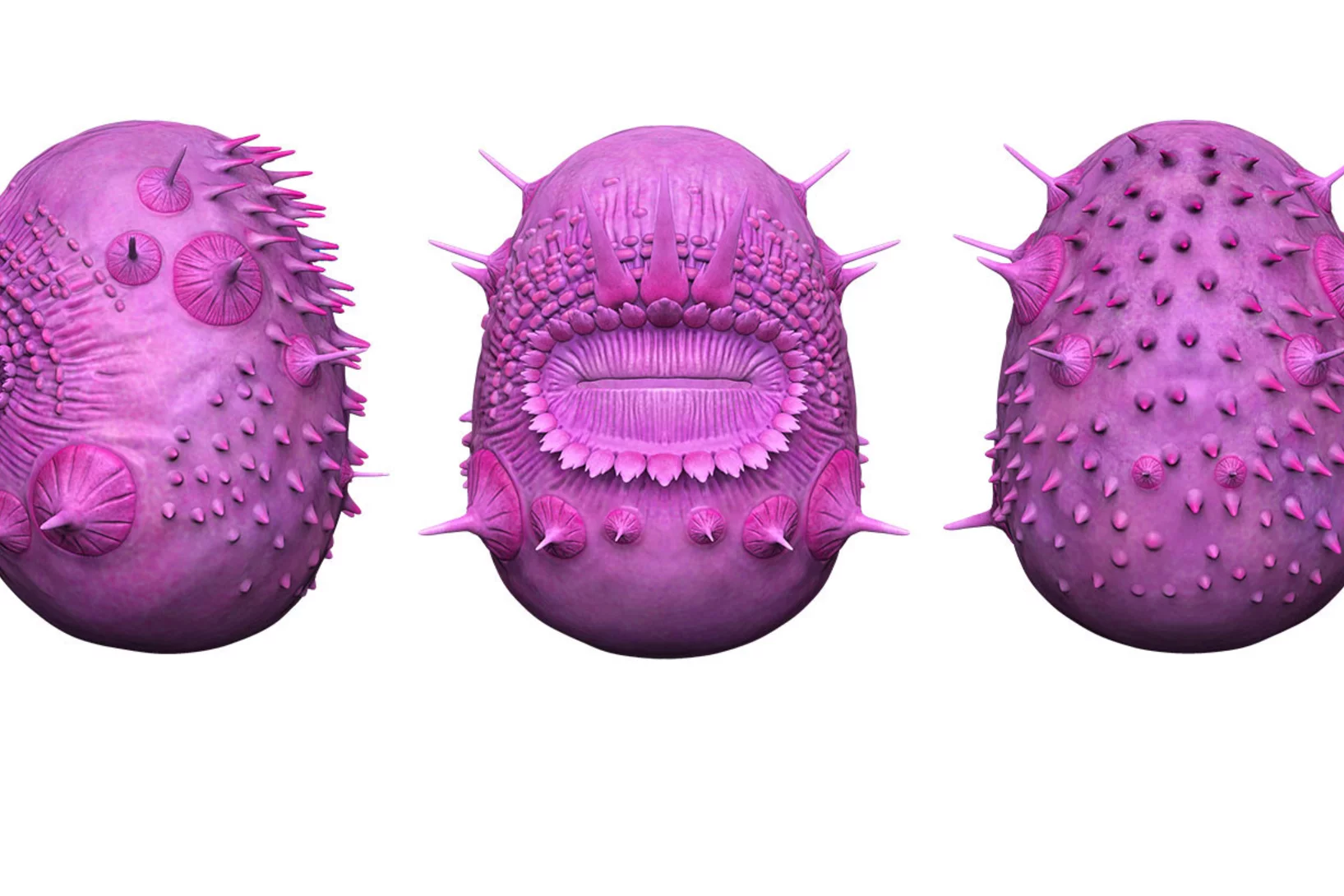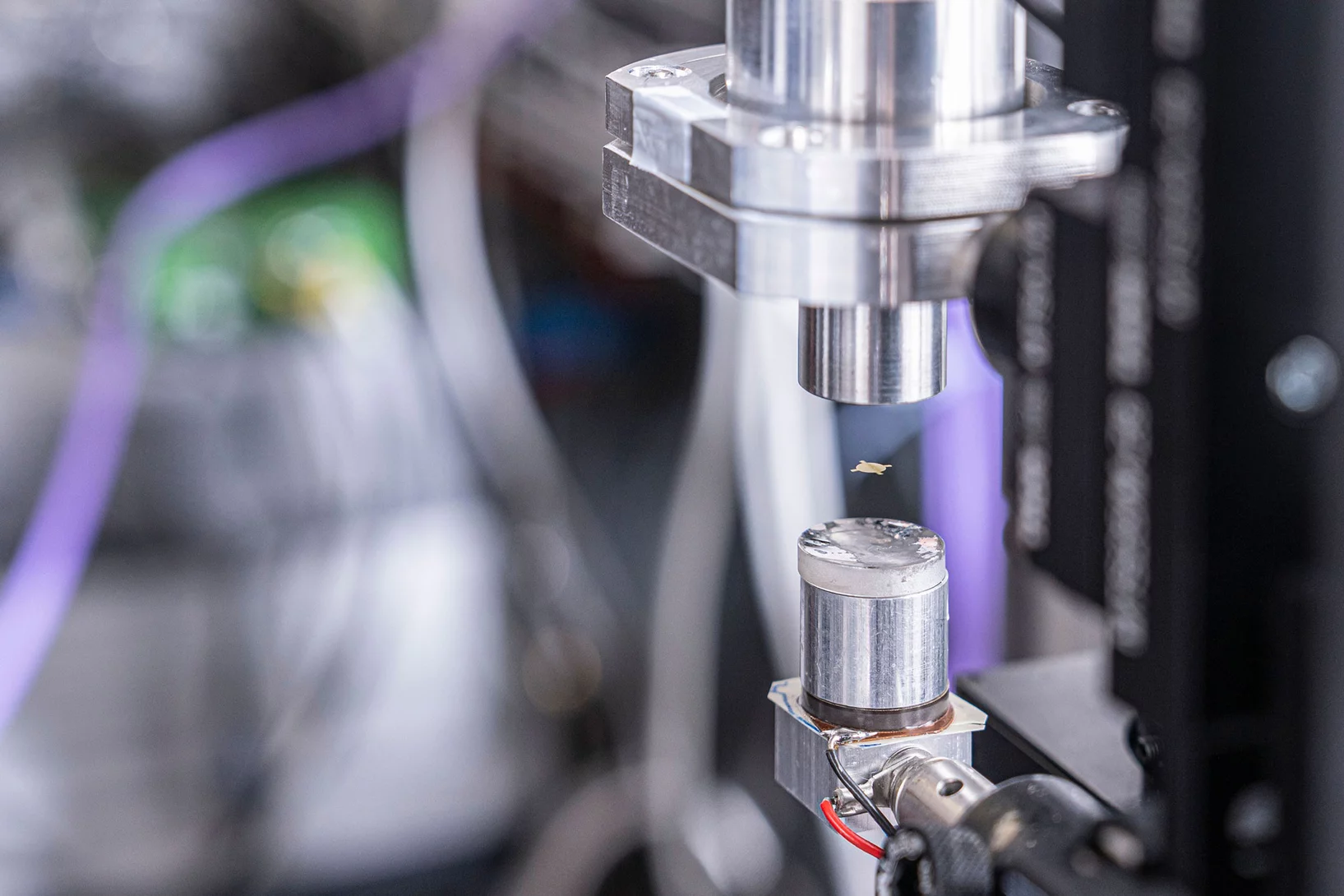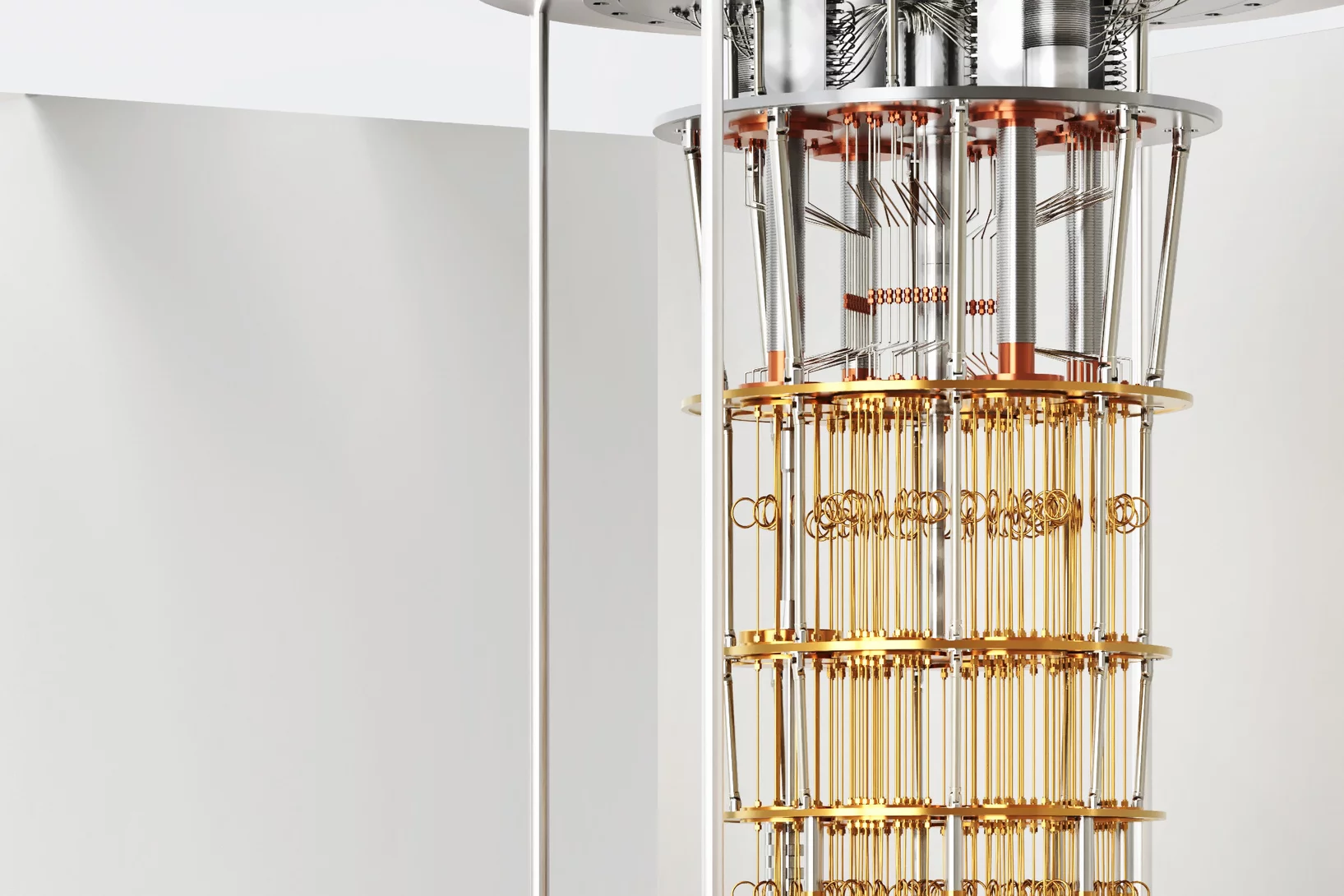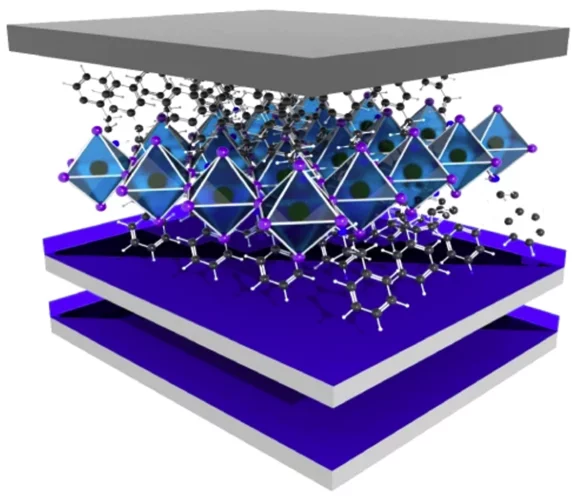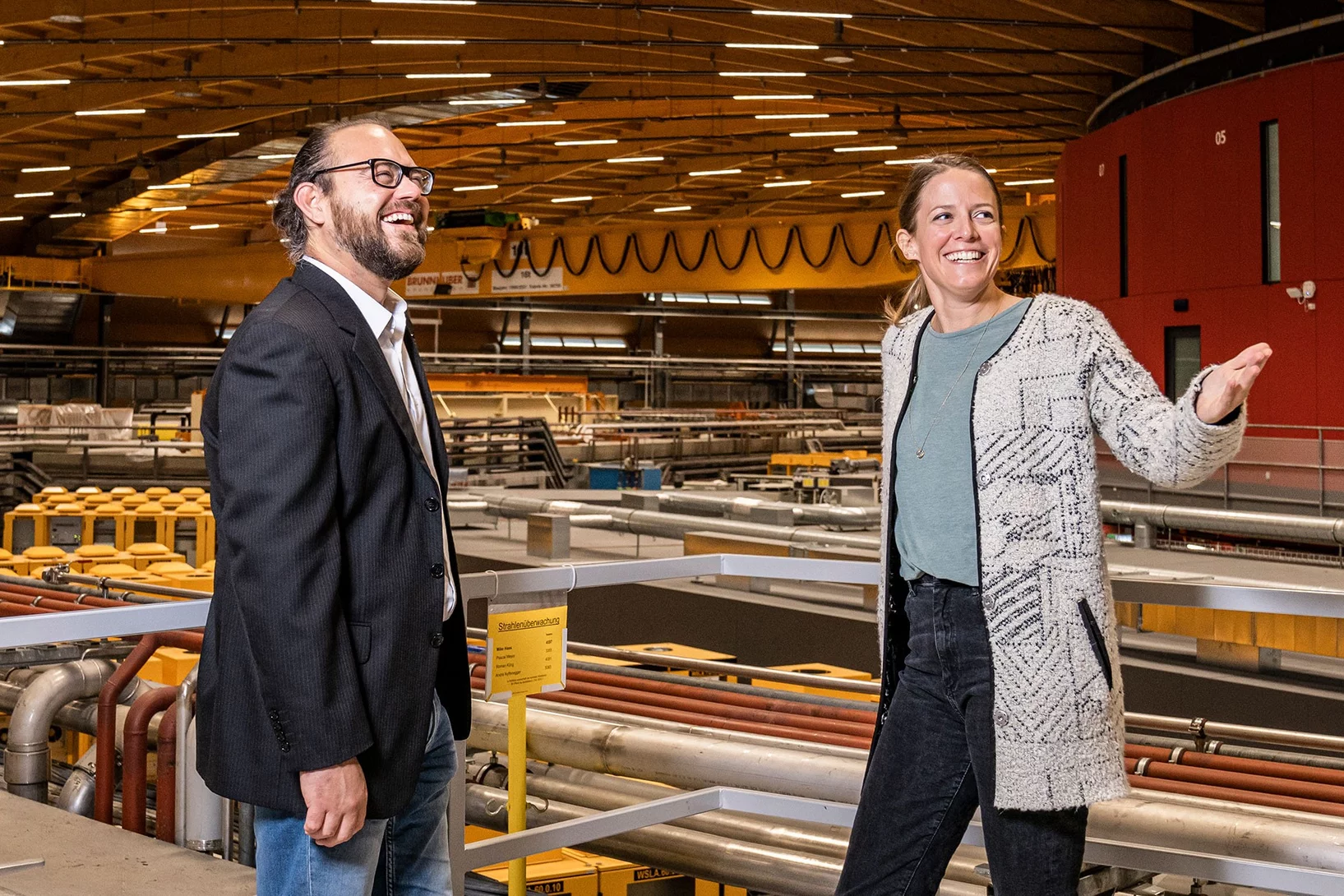In situ alloying during additive manufacturing
In situ alloying is an effective method to engineer microstructures of additively manufactured Ti6Al4V3Fe alloys.
Three PSI research facilities reveal magnetic crossover
Insights from the Swiss Muon Source, Swiss Spallation Neutron Source and Swiss Light Source reveal this coveted characteristic in an exotic layered material.
A piece of PSI history sets off on a long journey
Off to new shores – a high-tech component is on its way from PSI to Australia by sea. In future, it will be deployed at the Australian Synchrotron in Melbourne.
Weird fossil is not our ancestor
X-ray light solves puzzle of human ancestry
A new spin on sample delivery for membrane proteins
Proteins hover in front of the X-ray beam at a Swiss Light Source beamline. Now, spinning thin films bring on board these trickiest of proteins.
The chemical complex that regulates body zinc storage
Zinc deficiency compromises the immune system and is a global public health problem. Through experiments at the Swiss Light Source SLS and BESSYII, researchers gained new insights into zinc storage, with implications for understanding COVID-19 severity.
Solving the unsolvable
PSI and ETH Zurich have founded the Quantum Computing Hub, where top researchers work together on concepts for quantum computers.
A better understanding of water
Potentiometric map of water molecules created
Making it easier to differentiate mirror-image molecules
Researchers have shown that mirror-image substances – so-called enantiomers – can be better distinguished using helical X-ray light.
Reaction insights help make sustainable liquid fuels
Methanol made from CO2 in the air can be transformed into carbon neutral fuels. New mechanistic understanding aids development of this sustainable alternative.
Faster and smarter
PSI is pooling its expertise regarding the evaluation of research data in the new research division Scientific Computing, Theory and Data.
New SwissFEL soft X-ray endstation welcomes first users
Maloja is go. First user experiments mark a double first, not only for the Maloja endstation but also for the second beamline of SwissFEL, Athos.
Direct mechanochemical synthesis of polyoxometalates
Polyoxomolybdates have been directly synthesized from basic reagents in a mechanochemical one-pot reaction.
How to find anti-cancer agents
PSI researchers have developed a new substance that disables a vital protein in the cell skeleton.
Thermal and phase evolution during laser powder bed fusion of Al-Sc-Zr elemental powder blends
The reaction of elemental scandium and zirconium powders with liquid aluminum is observed directly via operando X-ray diffraction during laser 3D printing. This work demonstrates that elemental blends can be used to create fine-grained crack-free Al-alloys and highlights the importance of feature size.
Into the fourth dimension: time-resolved soft X-ray laminography
Combining time-resolved soft X-ray STXM imaging with magnetic laminography, researchers were able to investigate magnetization dynamics in a ferromagnetic microstructure resolved in all three spatial dimensions and in time. Thanks to the possibility of freely selecting the frequency of the excitation applied to the magnetic element, this technique opens the possibility to investigate resonant magneto-dynamical processes, such as e.g. magnetic vortex core gyration and switching, and spinwave emission.
A look into the magnetic future
PSI researchers are the first to observe a specific behaviour of magnetic ice.
Hercules School 2022
PSI hosted again the Hercules School in March 2022. We had the pleasure to welcome 20 international PhD students, PostDocs and scientists to demonstrate our state-of-the-art techniques and methodologies at our large scale facilities, the Swiss Light Source (SLS), the Swiss Spallation Neutron Source (SINQ) and our free electron laser SwissFEL.
Novel X-ray lens facilitates glimpse into the nanoworld
PSI develops a revolutionary achromatic lens for X-rays.
Exchange scaling of ultrafast angular momentum transfer in 4f antiferromagnets
A novel approach to controlling the speed of magnetic processes has been found through resonant magnetic scattering in an antiferromagnetic Lanthanide intermetallics.
Lighting up the appealing world of hybrid perovskites
Researchers from Italy, in collaboration with the Paul Scherrer Institut, successfully used the macromolecular crystallography beamline X06DA-PXIII at the Swiss Light Source to characterize promising perovkites materials used in solar cells and other photodetector devices.
How to get chloride ions into the cell
A molecular movie shot at PSI reveals the mechanism of a light-driven chloride pump
Simulant material could aid in Fukushima cleanup
A new simulation of the most dangerous radioactive debris from the Fukushima nuclear power plant will help with clean-up efforts.
Direct observation of crack formation mechanisms with operando Laser Powder Bed Fusion X-ray radiography
Operando high-speed X-ray radiography experiments reveal the cracking mechanism during 3D laser printing of a Ni superalloy.
Millions in funding for brain and quantum research
The European Research Council approves PSI projects for the development of a quantum computer and brain research worth about 5 million euros.
Semiconductors reach the quantum world
Boosted with superconductivity: Semiconductor technology can get a new twist by exploiting quantum effects in superconductors.
3D printed nanomagnets unveil a world of patterns in the magnetic field
Scientists have used state-of-the-art 3D printing and microscopy to provide a new glimpse of what happens when taking magnets to three-dimensions on the nanoscale – 1000 times smaller than a human hair.
Priority access call for work on combating COVID-19 continues
On January 30th, 2020, the WHO declared the recent outbreak of coronavirus disease 2019 (COVID-19), a public health emergency of international concern. It declared that there is an urgent need to improve our understanding of the newly identified virus and its possible future evolution as well as to contain the spread; to develop precise diagnostics and treatment, and to improve the public health response and patient care.
The COVID priority access call continues and is still open in 2022.
Fingerprint of Copper in Peptides Linked to Alzheimer's Disease
In an interdisciplinary project, researchers from the Laboratory of Nanoscale Biology in BIO and the Laboratory for Condensed Matter in PSD have revealed the reaction between the nitrogen atoms of the amyloid-beta peptide and copper/zinc ions by using soft X-ray absorption spectroscopy.
Ground-breaking technology development recognised
PSI researchers win the international Innovation Award on Synchrotron Radiation for 3D mapping of nanoscopic details in macroscopic specimens, such as bone.



